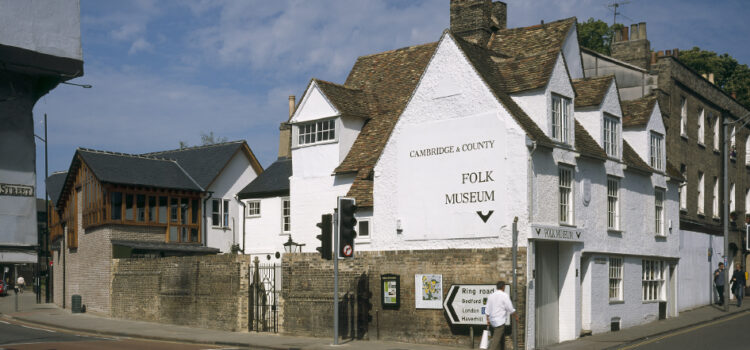If anyone has needed me over the last couple of weeks, I’ve been busy admiring the fresh coat of paint at the Museum of Cambridge on the old White Horse Inn. The yellow of the walls and the green shine down Castle Street. I can hardly wait for the scaffolding to come down to reveal the colour in the coming weeks. With our decorators, we matched the yellow and the green from the previous paint as closely as possible. With many layers of paint visible where brick repairs had been done, we started asking ourselves what other colours were hiding underneath.
We knew from a little bit of research that the building had been at least two or three other colours before. Though we didn’t know exactly when or why the building was painted yellow in the first place. I went to see what the Museum records could tell us.
Unfortunately, as it sometimes happens, history doesn’t always give us straight answers. I stumbled across more than 200 years of different paint schemes and black-and-white photographs that still couldn’t help us make a decision.
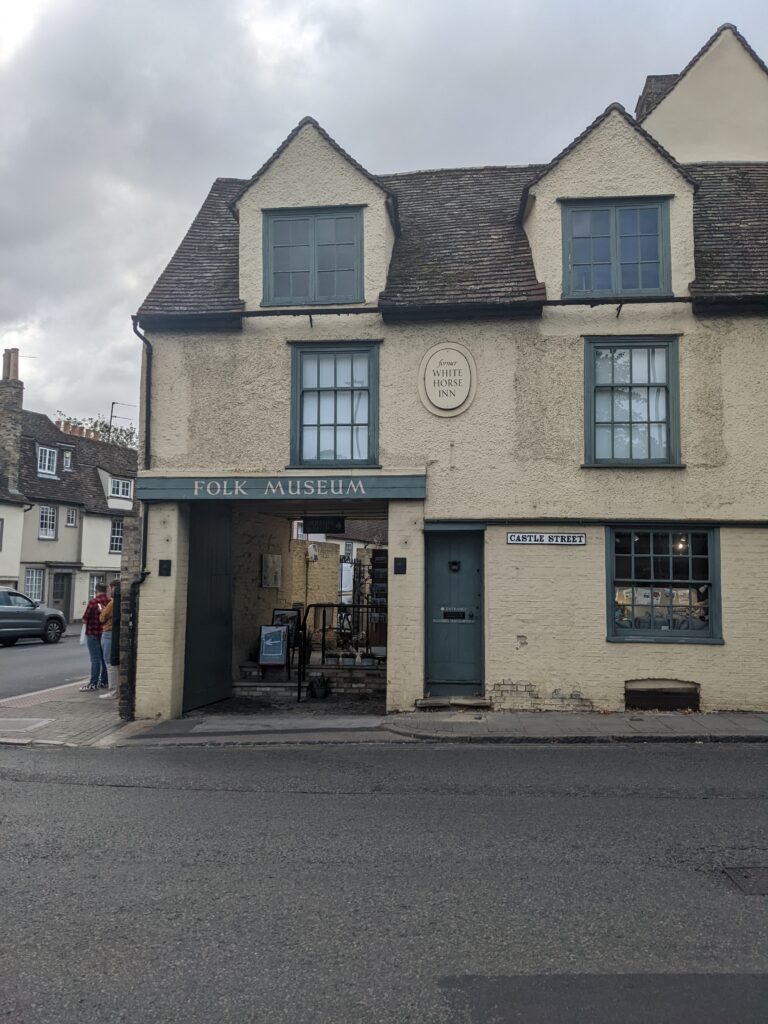
This is a view of the Museum right after our major refurbishment, which was completed in 2005.
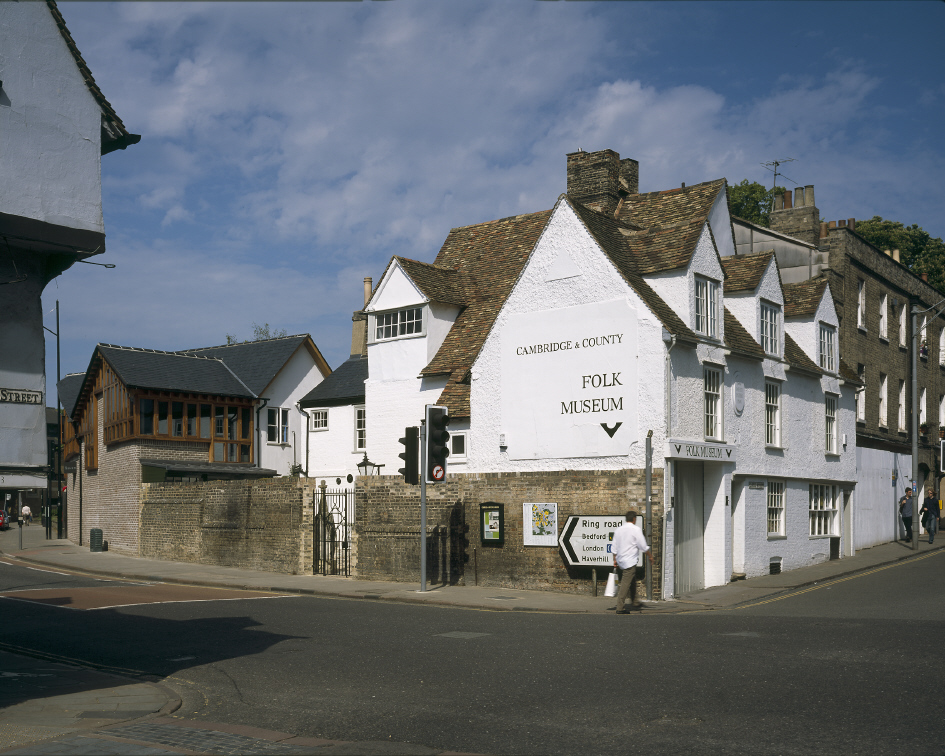
We know there were internal changes done to the Museum over the years, but when the Cambridge and County Folk Museum moved into the White Horse Inn, it was all white.

Before the Museum of Cambridge was the Museum of Cambridge, the old White Horse Inn had its own colours. Here is a well-known image from the early 20th century 1901-1932 with the last publican Willoughby Dudley-Hays, looking out along Castle Street. The building is light-coloured, possibly lime washed on top with a dark colour detail on the brickwork. Before 1932 the building was re-painted with darker colours on the brickwork that continued into the courtyard. We think these are two dark greens.
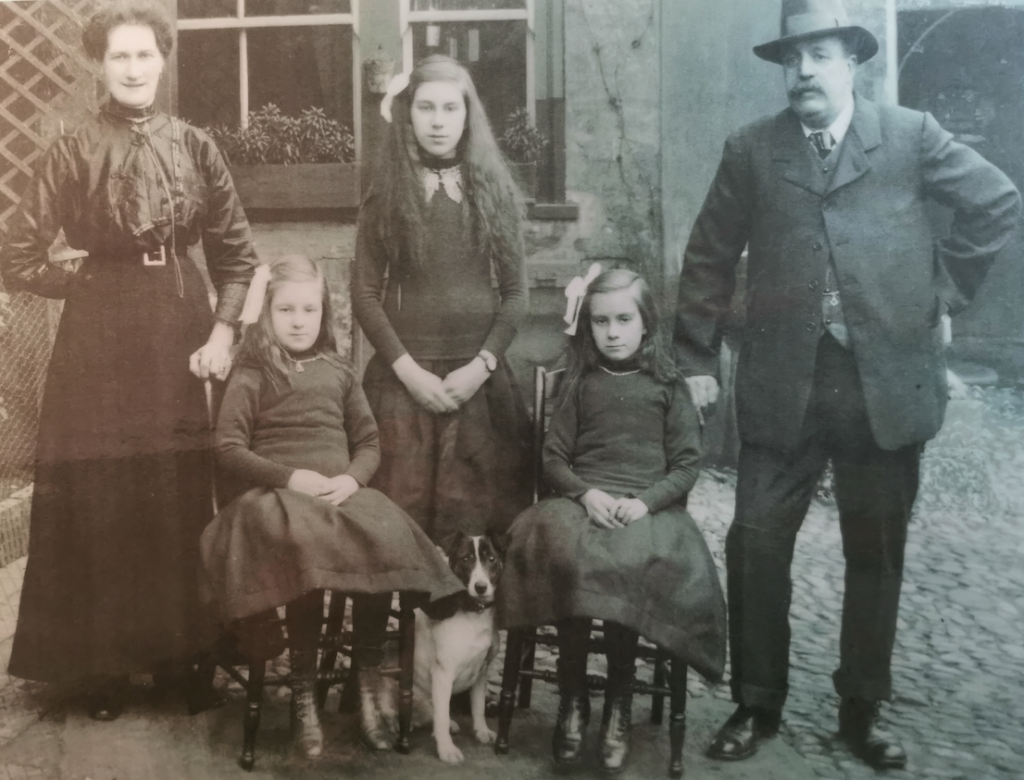
We ask ourselves, did Willoughby have the Inn painted when he took over in 1901?
What was it before? I wonder if he liked the colour?
Could this be the pub as it was sold to Willoughby in 1901?
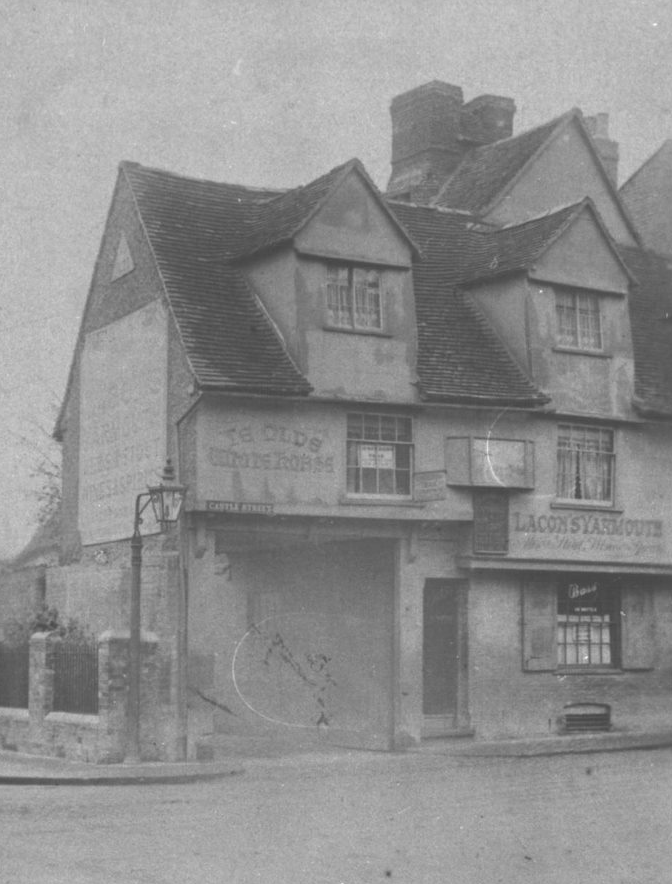
As I was thinking of all the colours the pub had been before, I still couldn’t find strong clues for the yellow. Where had it come from?
We know that it had been a wonderful orange-pink colour because the artist Mary Greene painted this watercolour in the late 19th century
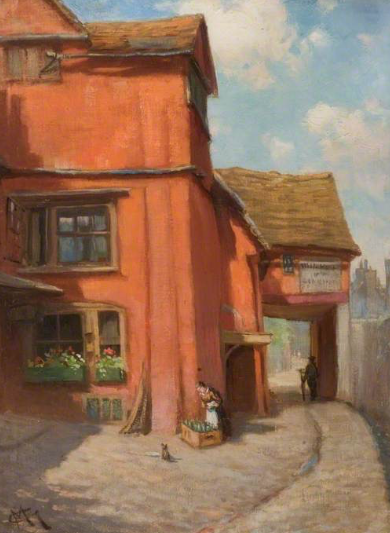
It wasn’t until I was searching for objects for the “Mugs, Medals and Meal for 15,000” exhibition that I found it. Tucked carefully away in tissue, this very sweet colour drawing of the White Horse Inn from Northampton Street.
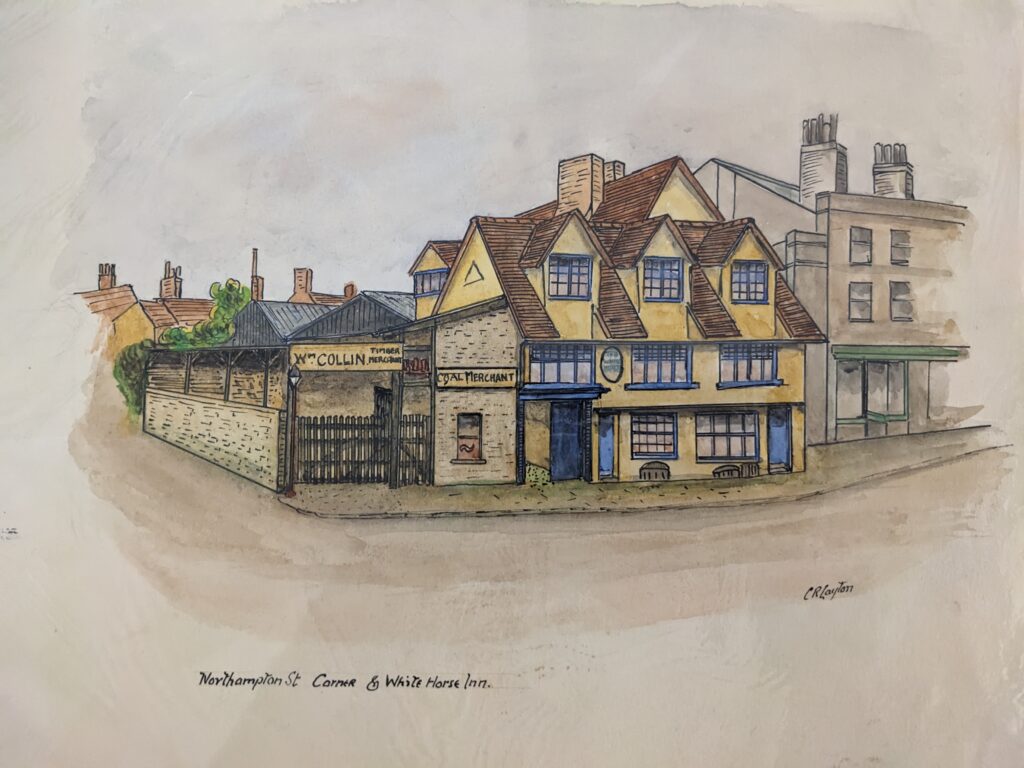
The artist C R Layton is unknown to us, and the picture isn’t dated. Could this have been the colour proposed when the new windows were added? (What did Willoughby think?) Or perhaps it could have been a sketch or a design that was never completed. Either way, we can see the yellow of the White Horse Inn which might have inspired the yellow we have today.
With the building works starting to reach its final stages, I can’t wait to see the White Horse Inn shine brightly on the corner for many more years to come.
